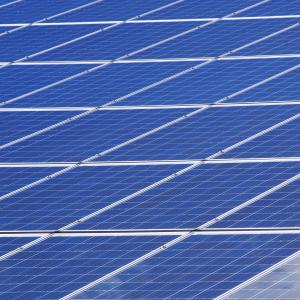Main features of off-grid & on-grid inverters
Main features of off-grid inverters:Off-grid inverters play a crucial role in off-grid solar systems by converting the direct current (DC) electricity generated by solar panels and stored in batteries into alternating current (AC) electricity that can be used to power household appliances and electronics. Here are the main features of off-grid inverters:
1. Inverter Type: Off-grid inverters are specifically designed for use in systems that are not connected to the grid. They are different from grid-tied inverters, which synchronize with the utility grid.
2. Pure Sine Wave Output: High-quality off-grid inverters produce a pure sine wave AC output, which is the same type of electricity that comes from the grid. This clean output is compatible with all types of appliances and electronics, ensuring they run efficiently and without damage.
3. Output Power Capacity: Off-grid inverters come in various power capacities, ranging from a few hundred watts to several kilowatts. The choice of inverter capacity depends on your energy consumption needs and the total load you plan to power.
4. Surge Capacity: Some off-grid inverters have surge capacity, allowing them to handle short-duration high-power demands, such as when starting up certain appliances or motors.
5. Input Voltage Range: Off-grid inverters are designed to work with the voltage range of the battery bank they're connected to. This voltage range might be 12V, 24V, 48V, or higher, depending on the battery configuration.
6. Battery Charging: Many off-grid inverters have built-in battery chargers that can recharge the battery bank using AC power sources, such as a generator or grid connection, when solar production is insufficient.
7. Battery Monitoring: Some inverters offer battery monitoring features that display the battery's state of charge, voltage, and other relevant information. This helps users manage their energy consumption and storage effectively.
8. Remote Monitoring: Advanced off-grid inverters might come with remote monitoring capabilities, allowing you to monitor the system's performance and status remotely through a computer or smartphone app.
9. Load Management: Certain inverters have load management features that prioritize specific loads when the available energy is limited. This can help avoid overloading the system during periods of low solar production.
10. Protection Mechanisms: Off-grid inverters often include protection mechanisms to safeguard against overloads, short circuits, overheating, and other potential issues that could damage the inverter or connected devices.
11. Expandability: Some off-grid inverters can be easily expanded by connecting multiple units together to increase power capacity as your energy needs grow.
12. Efficiency: The efficiency of an off-grid inverter refers to how effectively it converts DC power into AC power. High-efficiency inverters reduce energy losses and maximize the utilization of available solar energy.
Main features of on-grid inverters:
On-grid inverters, also known as grid-tied inverters, are a crucial component of solar energy systems that are connected to the electrical grid. They convert the direct current (DC) electricity generated by solar panels into alternating current (AC) electricity that can be fed into the grid or used by the property. Here are the main features of on-grid inverters:
1. Grid Synchronization: On-grid inverters synchronize with the frequency and voltage of the utility grid to ensure that the electricity they produce is in phase with the grid's electricity. This synchronization allows for seamless integration of solar power into the grid.
2. Maximum Power Point Tracking (MPPT): Many on-grid inverters include MPPT technology, which optimizes the solar panel system's performance by ensuring that the panels operate at their maximum power output under varying sunlight conditions.
3. High Efficiency: On-grid inverters are designed to efficiently convert DC electricity from solar panels into AC electricity for use in the property or to be fed into the grid. High efficiency helps maximize the energy production of the solar system.
4. Power Capacity: On-grid inverters come in various power capacities, ranging from small residential systems to large commercial installations. The choice of inverter capacity depends on the size of the solar array and the expected energy production.
5. Voltage Range: On-grid inverters are designed to operate within specific voltage ranges based on the grid's voltage specifications. They need to ensure that the electricity they generate aligns with the grid's voltage.
6. Monitoring and Data Logging: Many on-grid inverters offer monitoring and data logging features. This allows users to track the system's performance, energy production, and other key metrics in real time. Some inverters also come with online platforms or apps for remote monitoring.
7. Safety Features: On-grid inverters incorporate safety mechanisms to protect against voltage surges, short circuits, overloads, and other electrical anomalies. These features help safeguard the inverter and the grid.
8. Anti-Islanding Protection: Anti-islanding protection is a critical safety feature that prevents the solar system from continuing to feed electricity into the grid during a power outage. This protects utility workers who might be working on the grid.
9. Remote Shutdown: Some on-grid inverters have remote shutdown capabilities, which allow utility companies or system owners to remotely shut down the solar system for maintenance or safety reasons.
10. String or Microinverter Options: On-grid systems can use string inverters, which handle the output of multiple solar panels connected in series, or microinverters, which are installed on individual panels and allow for panel-level optimization.
11. Rapid Shutdown: In some regions, rapid shutdown functionality is required by regulations. This feature ensures that the solar system can be quickly de-energized in case of emergencies or maintenance.
When selecting an inverter, it's important to consider factors such as the inverter's capacity, compatibility with your solar panels, monitoring capabilities, efficiency, and whether any local regulations or requirements need to be met. Consulting with solar professionals can help you choose the right on-grid inverter for your specific solar energy system.





